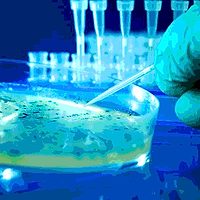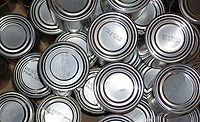While about a billion people in this world are starving, unimaginable amounts of food are unsuitable for consumption because of molds that produce toxins, such as aflatoxin. The Food and Agriculture Organization estimated that about a quarter of the world’s agricultural produce is contaminated with mycotoxins,[1] and, in the last 10 years, mycotoxins have accounted for 30–60% of food and feed rejections at European Union borders.
There are ways to reduce the growth of molds in staple foods, particularly during storage, but also in the field, such as using curved mirrors to direct sunlight to too-moist areas. In India and other countries where the food is grown on small patches of land, solar energy is used on a small scale to reduce losses. Although not perfect, largely because of extraordinary rainfall or monsoons during harvest, these approaches help reduce mold growth, and some companies are developing tailor-made installations for this purpose. Food that is not needed by the grower can be sold to companies that use solar technology for drying. In parallel, however, this problem has also stimulated use (not genetically modified) of varieties that are more resistant to mold and, thus, less risk of mycotoxin contamination.[2]
If products are stored in silos that are not insulated, the temperature difference between the sides in the sun and in the shadow will cause moisture to migrate from the warmer side (higher partial water vapor pressure) to the cooler side where it will condense and encourage growth of (toxigenic) molds. Thermal insulation will reduce or eliminate this problem, but this approach needs a good business plan: In the longer term, the initial investment term will pay back because of reduced losses. In practice, however, existing knowledge that would reduce losses is not applied, primarily because people do not have access to this information.
Many countries have regulations specifying the maximum allowed concentration of mycotoxins, but there are no regulations requiring measures to reduce contamination. If not legally required, producers are reluctant to invest in approaches that would reduce mold growth. Considerable effort, however, is spent on quantifying mycotoxins in food and on developing methods that are able to detect increasingly lower concentrations. Perhaps now is the time to divert some of these efforts towards methods that reduce the problem, specifically preventing mold growth and affordable methods to eliminate mycotoxins from contaminated food. These also require education and training of those who need to apply the knowledge.
The Global Harmonization Initiative (GHI) Working Group on Mycotoxins is developing proposals aimed at reducing mycotoxins in staple food, and helping make farmers and industries more aware of the potential. Ultimately, the goal is to make measures reducing mold growth compulsory worldwide.
Initially, the focus will be on three issues:
• Grains, lead by Prof. Hamid Ezzatpanah
• Nuts and dried foods, lead by Prof. Karina Grigoryan
• Spices, lead by Prof. Naresh Magan.
Other working parties will investigate dairy products, fruits and vegetables, and other foods in the future.
Anyone interested in joining the Working Group on Mycotoxins and/or one of the working groups is invited to contact Prof. Mark Shamtsyan (mark.shamtsyan@yandex.ru) or Karina Grigoryan (foodlab@inbox.ru).
Huub Lelieveld is president of the Global Harmonization Initiative, a member of the Executive Committee and past president of the European Federation of Food Science and Technology. He is a member of the Editorial Advisory Board of Food Safety Magazine.
References
1. Wu, F. 2007. Measuring the economic impacts of fusarium toxins in animal feeds. Anim Feed Sci Technol 137(3-4):363–374.
2. V. Prakash, personal communication.




